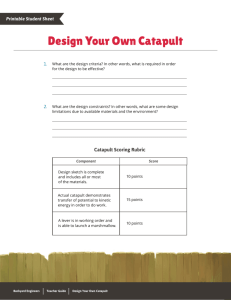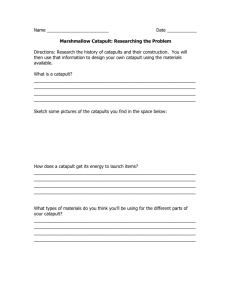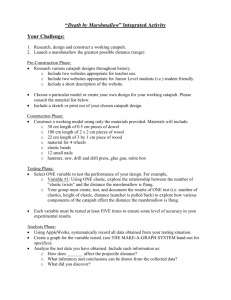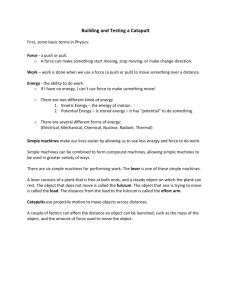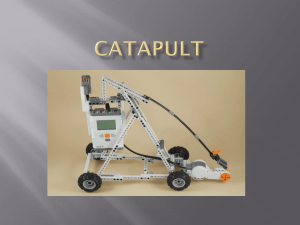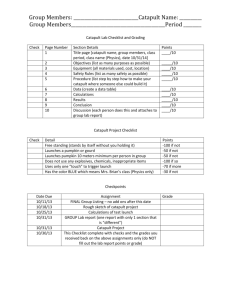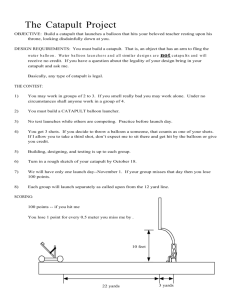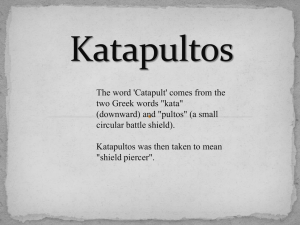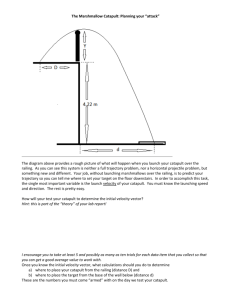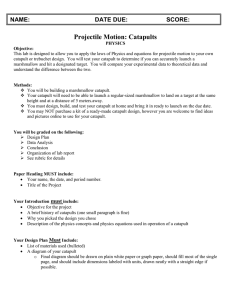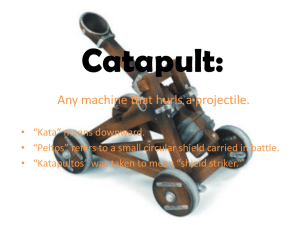Catapult Chaos 2012
advertisement
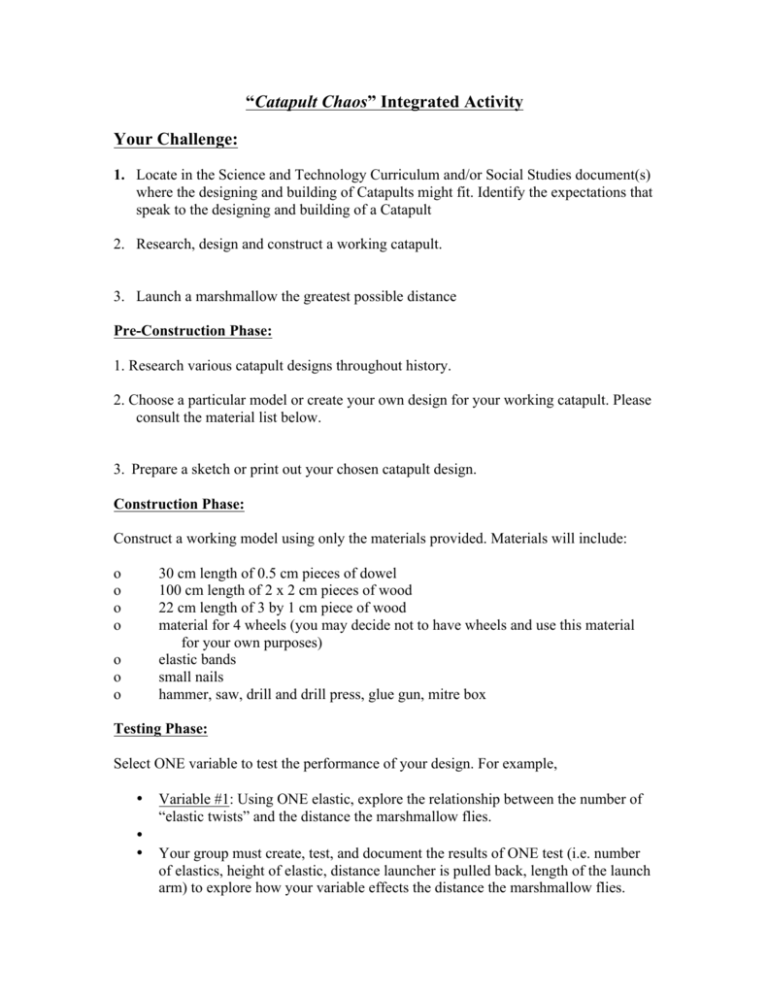
“Catapult Chaos” Integrated Activity Your Challenge: 1. Locate in the Science and Technology Curriculum and/or Social Studies document(s) where the designing and building of Catapults might fit. Identify the expectations that speak to the designing and building of a Catapult 2. Research, design and construct a working catapult. 3. Launch a marshmallow the greatest possible distance Pre-Construction Phase: 1. Research various catapult designs throughout history. 2. Choose a particular model or create your own design for your working catapult. Please consult the material list below. 3. Prepare a sketch or print out your chosen catapult design. Construction Phase: Construct a working model using only the materials provided. Materials will include: o o o o 30 cm length of 0.5 cm pieces of dowel 100 cm length of 2 x 2 cm pieces of wood 22 cm length of 3 by 1 cm piece of wood material for 4 wheels (you may decide not to have wheels and use this material for your own purposes) elastic bands small nails hammer, saw, drill and drill press, glue gun, mitre box o o o Testing Phase: Select ONE variable to test the performance of your design. For example, • • • Variable #1: Using ONE elastic, explore the relationship between the number of “elastic twists” and the distance the marshmallow flies. Your group must create, test, and document the results of ONE test (i.e. number of elastics, height of elastic, distance launcher is pulled back, length of the launch arm) to explore how your variable effects the distance the marshmallow flies. You must test your catapult at least FIVE times to ensure some level of accuracy in your experimental results. Analysis Phase: Record all data obtained from your testing situation in a spreadsheet. Create a graph for the variable tested Analyze the test data you have obtained. Include such information as: • • • How does _______ (your variable)___ affect the projectile distance? What inferences and conclusions can be drawn from the collected data? What did you discover? In your group, discuss the following: a. What modifications might your group make (in wording, in design parameters, in materials, etc.) prior to introducing this challenge in your classroom? b. How could you assess student learning? What specifically do you believe could and should be assessed? c. What knowledge, skills, and attitudes do you think children would develop through completing a similar activity? d. What did you learn? Consider such topics as: what did you learn about catapults; about building and construction; about design processes; about equipment use; about technology and spreadsheets; about yourself.
